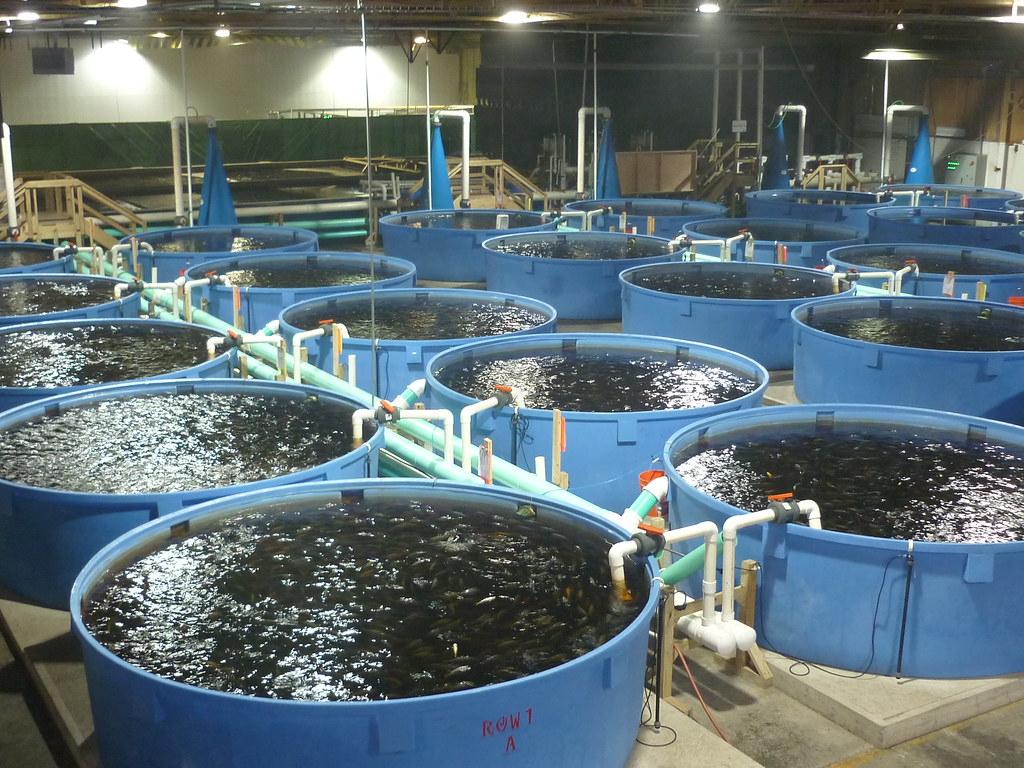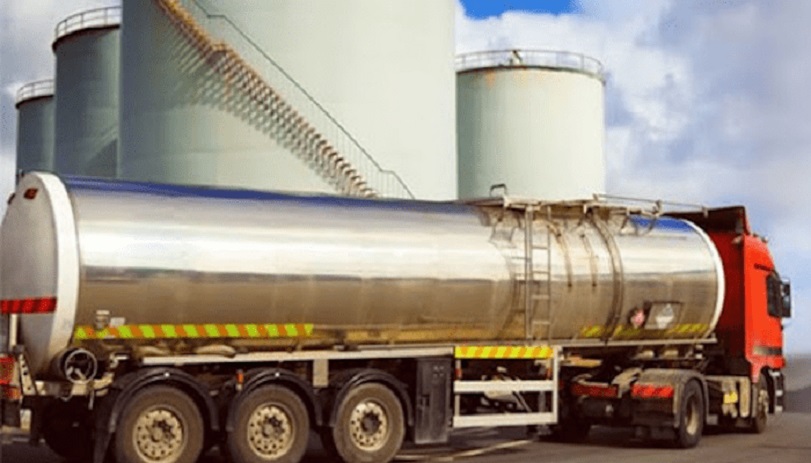Economy
Starting and Managing a Profitable Catfish Farming Business in Nigeria

By Sodeinde Temidayo David
I’m sure you know that catfish farming in Nigeria has become one of the most commonly practised fish farming businesses, with a lot of back benefits. The high demand and consumption of fish have made the business very profitable if well-managed.
Catfish farming has become one of the fastest-growing areas of animal food production. Gone were the days when the only means of getting fish was by catching it in the local rivers, ponds or from fishermen. About half of the fish consumed in Nigeria are now raised in artificial environments.
If you are looking forward and aspiring to start a catfish farming business of your own, you have come to the right post. This article will provide you with not just starting the business, but also give you a guide to managing the business to maximise profit and answer the questions you have in mind.
Information in this publication was gathered from Business Post researchers, personal experiences and resources from fish farmers and experts in the field and I have endeavoured to make this writing very detailed. You might just want to keep away everything that might distract you for now.
What You Need To Know Before Venturing into the Business
Before you venture into catfish farming, take note that this business is broad, and like every other business, one needs to take risks. Catfish farming comes in different specialisations which are subdivided as businesses on their own. These include feed production, hatching, growing production to targeted sizes, marketing and distribution. This also comes with the responsibility to test water PH, feed the fishes, sorting and grading of the fishes into different sizes, and also include other jobs and monitoring to bolster the growth of production.
This might seem like something difficult to comprehend, especially when you are not familiar with fish farming. It’s just that knowing and applying the right cultural practices in fish farming is very essential for success.
There is more to catfish farming than purchasing fingerlings, stocking them in a tank, and feeding them till they get to the size for sale. Well, those are just the basic stuff and I assure you that when you relax and read in calmness, you will discover all that it takes to establish, manage and make profit in a catfish farming.
What You Should Consider Before Investing
Do you have the qualities and attitude of an entrepreneur? Since farming is a type of self-employment, before you make any investment in the business, the first consideration should be your interest. This might come with other attributes like dedication, time commitment and motivation.
Starting a catfish farming business requires effort, dedication, and most importantly passion, and it is the interest of an entrepreneur that will determine whatever mission and vision for the business.
If you have an interest and you think you are ready for fish farming, make sure you know what you are about to venture into.
To start rearing catfish with an aim for success, one would have to consider the size of the farm, size of production, capital, intended number of stock, location, pond, market, species of fish, including water availability and legal issues (tax, regulatory agencies, etc).
When a person has little or no knowledge in fish farming and is ready to put in all for it, the business also has a way of educating about itself in a hard manner. Acquiring knowledge will not be a problem if you are still reading this, and I also recommend additional training (you should try working on a farm even if it would be for free just to gather experience) no one can take away your knowledge.
The good news is that one can do other businesses and still run a successful fish farm. Even civil and public servants can venture into fish farming, a business that does not bridge the public service rule.
Basic Requirements to Start a Catfish Farm
Just like every other business, there are requirements needed to start a catfish farm which depends on the type of scale in target based on capital.
To start and run a fish farm is not as difficult as it is when you have this knowledge. Establishing a farm for success varies on the size and vision of the entrepreneur. It may be small scale, medium scale, or large scale.
A small scale can contain a maximum of 50,000 pieces of the startup sizes, a medium will take between 50,000 and 100,000 pieces and anything more than that means that is a large scale establishment.
Fish farming is easy to carry out as compared to other complicated modes of farming. The only thing someone need is a piece of land and a constant source of water. But before this, you will have to have a blueprint of your startup, which should be based on your capital. Knowing the amount on hand, then you can manage expenses for the basic requirements.
Securing a piece of land is the first set towards having a fish farm, and the great advantage of this is that the land does not need any special treatment and clearing as long as it is plain terrain. This also includes establishment in any good location, it could even be in an estate since fish doesn’t cause any environmental disturbance but this still depends on an agreement with the neighbours.
All you have to do is just look for a land where you can get it cheap and buy, and the size depends on the capacity you wants to manage, the bigger the space, the more fish you can rear, and also decides the amount of return you should expect. I recommend half plot if it would be an average fish farm.
After securing land, a pond is needed for the rearing of the fish and this is where you will need experts, just for the construction and plumbing works! You can get a specification from what you see on other farms and the expert will give his advice and knowledge. This is where things get tricky because it’s the quality of a pond that determines a long term fish farming business.
So, you can’t just use any regular plumber or construction engineers, rather get one specialized in this business. You don’t want to start the business to begin to see your fishes on the ground or add to the numbers in the ocean.
There are different kinds of ponds system for catfish farming, which also varies in different designs. However, the most common types used in Nigeria and easy to manage are plastic ponds, tarpaulin ponds, concrete ponds, and earthen ponds.
Choosing a pond system might require one to seek expert advice when the individual is not familiar with the system, as there are other factors needed to be considered based on the focused phase of production.
In absence of a sizeable piece of land for big ponds, tanks and drums can be used for a small startup. One might as well use old ponds as long as it is properly washed and fumigated.
Setting up the ponds is not difficult, but one must ensure a proper drainage system, this is where the plumbing work has to be done and monitored properly.
This includes having a water source and channel inlets to the ponds, as the adequate water supply is very vital for a fish farm and lack of it may result in a tragedy because water needs to be changed at regular intervals. Naturally, available sources of water such as wells, boreholes and river water are the most suitable. Other sources like rainwater and tap water from the chemically treated source are not recommended for the rearing of fish.
You will also need to install an overhead tank, which will serve as a water reservoir from which water is supplied to the ponds. This has to be through a good plumbing system for convenient water flow and supply in the farm.
Cost of Starting a Catfish Farming Business
Setting up a fish farm requires more careful planning and much capital input. To meet all the basic requirements to start a small scale fish farm, this can cost between N500,000 and N4 million, depending on the land cost, type of pond, pond size, number of stock, type of production, other equipment and facilities.
Staring with a plastic pond is cheaper as all you have to do is to buy the already made pond and set it up with good plumbing and waterworks. Other types of ponds that require construction may require a range amount of N200,000 to N500,000, with plumbing expenses.
A good water source like the borehole should cost nothing less than N300,000, depending on the location and the other costs are managing and feeding expenses, which can cost up to N1 million.
A big farm would require extra expense on employees and other workers. Also, since we are in a world of technology, one might want to spend more on technology equipment, website and software to grow the business, doing specific programs like payroll, social media management.
Starting the Business
After having the land, pond, an overhead tank and a good water channel, then you are ready to stock and become a big-time fish farmer. All you just have to do is to get your startup size of a good species, this could be Fries (newly hatched fish), fingerlings (Catfish aged 0-4 weeks) or Juveniles (Catfish aged 4-8 weeks) and could be got from another farm that specializes in supplying them, and make sure your fishes are from a healthy source.
In Nigeria, commonly grown catfish species include Clarias gariepinus, Heterobranchus bidorsalis, and a hybrid of Clarias and Heterobranchus (Heteroclarias). These breeds are the best to rear for growing if properly managed because they have fast-growth, are prone to disease and adapt to our environment. But you just have to make sure that your stock won’t be too crowded for the available space.
Above all, you will need to have a business plan and marketing strategy. A good strategy might require you to join an association of fish farmers, as it unlocks opportunities of getting buyers, suppliers, workforce, production monitoring, advice and support. Joining a good association can also make you make access government support and grants for fish farmers.
For beginners just starting the business, I recommend the stock of Juveniles, rather than Fingerlings, for better management and because they are less sensitive to the water PH.
Managing the Business
Managing a fish farm is the main business and this would require all available resources, time and labour. It is the proper management of the farm that will determine the number of output and the success of the production.
Managing a fish farm starts from pond management, how secure the pond is and how vulnerable it is to pests and diseases. When starting the business with a new pond, ensure that the pond chemicals are neutralised to protect the health and growth of fishes. This concerns the users of tarpaulin or plastic ponds.
The safest way to ensure that a pond will cause no harm is to wash the pond with salt and fill it with water for five days before stocking in the pond. This can also boost water quality. For an earthen pond user, applying fertilizer after constructing the pond will make the soil fertile. If the soil of your pond is not fertile, then it will hamper the health and proper growth of fish.
Also, make sure there is no hole in the pond and that it is strong enough not to fall apart. A good water flow direction will also help a pond lasts longer. There should be a downward slope direction to the outlet.
Being assured that the pond is eligible and safe for use, water quality has to be monitored and if not properly managed, it could lead to a disaster. Water management is very important in a fish farming business, as fishes live, breathe, feed, grow, and excrete wastes in the water, and are, therefore, totally susceptible to changes in water quality. For fish to maintain an optimum level of health, avoid stress or disease then the water quality of the water must be monitored and controlled, as a fish life is dependent on the water it lives in for all needs.
Catfish become stressed when key water quality parameters such as temperature, pH, alkalinity, hardness nitrogenous waste, dissolved oxygen and salinity are not kept with specified thresholds.
Knowing the quality of your water source is very important and could be tested with water testing kits like the water pH meter.
The measure of the alkalinity or acidity of water is expressed by its pH value. The pH value ranges from 0 to 14, with pH 7 indicating that the water is neutral, while a value smaller than 7 indicate acidity and a value greater than 7 notes alkalinity. Fish production can be greatly affected by excessively low or high pH.
Young age fishes like the fries, fingerlings and juveniles are more sensitive than adults. Waters ranging in pH from 6.5 to 8.5 at sunrise are generally the most suitable for growing fish, and extreme pH values can even kill your fish. Most cultured fish will die in waters with pH below 4.5 and 10 or above.
The key is to keep soil pH at 6.5 or above, which will usually maintain water pH, hardness, and alkalinity at desirable levels.
Pond water with unfavourable PH for fish production can be corrected by the use of water-soluble fertiliser which will ensure that your water pH and acidity are within acceptable limits and a necessary part of managing the alkalinity, hardness, and pH of the water.
If the pH is below 6.5 at sunrise, proving that it is acidic, then you will have to use lime and alkaline fertilisers that do not cause hardness problems in treated water, like the soda ash (sodium carbonate) and sodium hydroxide which would raise the pH of water when injected into a water system.
Note that this is always done with caution and should have a measurement according to the quantity of the water and the reactions of the fish should be monitored. Ammonium hydroxide, calcium hydroxide (lime) or magnesium hydroxide can also be used. To be on the safe side, I recommend sodium bicarbonate because it is not harsh on fish.
If the pH is above 8.5 at sunrise, showing that it is too alkaline, you can lower the pH with the use of acid fertilisers like phosphoric acid, hydrochloric acid (HCI), nitric acid or carbon dioxide can be used, in addition to sulfuric.
To run a profitable fish farm, you should be able to properly manage the feeding of fish. Catfish eat two times a day, morning and evening and water would have to be changed regularly (averagely once in two days) since feeding would lead to excretion and it is risky for catfish to live in unchanged water.
You should also adopt sorting and grading of fishes, as this act of separating fishes into categories of their various physical growth will create more space and uniformity. For this, you will need a labour force.
The dynamic aspect about fish is that the same fish of the same age, birth origin, feed and same pond may not grow at the same rate. One might be very big while the other very small. This is why sorting is important, to separate big fish from the small fish and put them into separate ponds. If not done, the bigger fish may eat the smaller fish or prevent them from eating well.
Fish farms are easy to maintain as long as the fish are fed good nutritional feed and you make sure the ponds are secured, the farmer is assured of a good harvest.
You should monitor the health of your fishes and the fish pond should be protected from predators. Daily scouting should be done and suspected fishes should be isolated from the pond to avoid spreading diseases all over the pond.
Fish diseases can be treated by using salt, potassium permanganate solution, chemicals, and drugs for veterinary uses. Above all, prevention is better than treatment.
If you are successful in managing the business, then you could as well mix things up and venture into another phase of production.
Knowing the Phases of Production
After stocking your preferred number of fingerlings, the way you manage it will determine the phase of products suitable for you, but this could also be by choice. Different phases of catfish production vary according to size.
Catfish becomes ready for sale when it has an average weight size of 300 to 400 grams. This is called the mélange production, the raising of catfish from fingerlings to three months to meet the size for those that smoke and sell.
Table Size Production is the raising of catfish from fingerlings to an average weight size of 500 to 700 grams, usually from 4 to 5 months from fingerlings.
This follows the grow-out stage, an average size of 1kg upward. At this stage, the fishes are in their bigger sizes and are at least six months old.
Broodstock Production is an exclusive part of the business, as it is the raising of catfish for the specific purpose of becoming a parent stock for the hatchery. They are usually raised for over a year.
Bottom-line
The catfish market is readily available both locally and internationally. Major urban centres in Nigeria are readily available markets for fish. For large-scale fish farmers, the international market is available. The fish market is growing, and Nigeria has had to import fish from China because the demand exceeds the supply and this has also made us witness Chinese farmers coming to Nigeria for large scale catfish production.
The government in recent years have been giving technical support to fish farmers. Being an agricultural sector that has not been fully utilized, the Nigerian government is also committed to making sure that more Nigerians take to the rearing of fish for both small scale and commercial use.
The good news is that there is still more room for growth and investing in this sector. The sector is still growing. Catfish farmers could easily combine it with other fish species.
Economy
FG Insists on January 2026 Implementation of Tax Laws

By Modupe Gbadeyanka
The planned implementation of the new tax laws from Thursday, January 1, 2026, will not be reversed, the federal government has emphasised.
This emphasis was made amid controversies over discrepancies in the harmonised and gazetted copies of the laws.
A lawmaker in the House of Representatives, Mr Abdussamad Dasuki, raised this alarm last week during plenary.
He said parts of the laws passed by the National Assembly were different from the gazetted, calling on the leadership to look into this.
In June 2025, President Bola Tinubu signed the four tax-related bills in law as part of his government’s reform programme
The new tax laws are the Nigeria Revenue Service (Establishment) Act, the Joint Revenue Board of Nigeria (Establishment) Act, the Nigeria Tax Act, and the Nigeria Tax Administration Act.
Addressing newsmen after a meeting with Mr Tinubu in Lagos on Friday, the Chairman of the Presidential Committee on Fiscal Policy and Tax Reforms, Mr Taiwo Oyedele, stressed there were no plans to suspend the implementation of the laws from next Thursday, despite calls for this.
However, he welcomed the decision of the House of Representatives to investigate the matter, stressing that the federal government is ready to work with the National Assembly if any action becomes necessary, but maintained that the reform timeline remains unchanged.
Mr Oyedele explained that the reforms are aimed at providing relief to Nigerians and stimulating economic growth rather than generating immediate revenue, noting about 98 per cent of workers would either pay no personal income tax or pay less, while 97 per cent of small businesses would be exempted from corporate income tax and VAT withholding tax.
He added that large businesses would also benefit from lower effective tax rates, noting that the reforms are designed to promote inclusivity, shared prosperity and improved tax compliance.
The tax expert said preparations for the reforms began in October 2024 when the bills were first submitted to the National Assembly and have continued through capacity building, system upgrades and stakeholder sensitisation since the laws were signed in June 2025.
Economy
Looming Supply Glut, Ukraine Peace Deal Hope Weaken Oil Market

By Adedapo Adesanya
The oil market depreciated by more than 2 per cent on Friday as investors weighed a looming global supply glut, while also keeping an eye on a potential Ukraine peace deal.
Brent crude futures lost $1.60 or 2.57 per cent to trade at $60.64 per barrel and the US West Texas Intermediate (WTI) crude futures crumbled by $1.61 or 2.76 per cent to $56.74 a barrel.
The global oil supply next year will exceed demand by 3.84 million barrels per day, according to figures from the International Energy Administration (IEA) in its December oil market report.
Supply rose sharply this year boosted by output hikes from the Organization of the Petroleum Exporting Countries and allies (OPEC+) as well as growth in the United States and other producers. The group also paused output increases for the first quarter of 2026.
Meanwhile, OPEC kept its global demand growth forecast for year next unchanged in its monthly report, with its data indicating that world oil supply will match demand closely in 2026, in contrast to the IEA’s view.
While supply disruptions have helped oil prices rebound in recent sessions from their near five-year low, they are on track for their steepest annual decline since 2020. Brent and WTI are down 19 per cent and 21 per cent respectively on the year, as rising crude output caused concerns of an oil glut heading into next year.
Investors are watching for developments in the Russia-Ukraine peace process ahead of talks this weekend between Ukrainian President Volodymyr Zelenskiy and US President Donald Trump.
They will be focusing on the possible impact on future oil prices as a peace agreement could lead to the removal of international sanctions against Russia’s oil sector.
The Ukrainian president has said he would be willing to call a referendum on an agreed peace framework if Russia agrees to a ceasefire.
In Venezuela, the White House ordered the US military forces to focus on a “quarantine” of Venezuelan oil for at least the next two months, indicating the Trump administration is currently more interested in using economic rather than military means to pressure the South American OPEC member.
During the week, the American Petroleum Institute (API) estimated that crude oil inventories in the United States saw a build of 2.4 million barrels in the week ending December 19. Crude oil inventories data from the Energy Information Administration (EIA) will be released next week due to the Christmas holidays.
Economy
Sources of Business Finance in Nigeria: Types and Options

Finance may be the single most essential element when it comes to the progress and sustainability of businesses in Nigeria. The level of funding available to businesses, small and big, determines their ability to function, grow, and compete. The Nigerian business environment, due to the interplay between the local economy, financial institutions, government, and private investors, offers multiple financing opportunities. The dynamics of these financing opportunities helps business owners and managers make the right decisions that best respond to their objectives and the level of risk they are willing to take.
Start your Livescorebet registration and discover more as this article analyzes the different sources of business finance in Nigeria in a systematic and detailed manner. It defines and explains internal and external financing options and the criteria relevant businesses may use in their search for the best financing instrument.
Understanding Sources of Business Finance
Before one can delve into the different options of business financing available, it is important to define business finances and categorize it. The objective of this is to establish a foundation for understanding the extent to which some options may be more appropriate for different businesses than others.
What Are Sources of Finance?
Sources of finance are how a business acquires funds to begin activities, settle daily operations, or pay for additional business activities like acquisitions, expansions, and long-term projects. Businesses may need to finance the purchase of new equipment, hire and pay additional staff, manage business cash flow, develop new products, or finance the expenses required to enter or compete in new markets.
In Nigeria, the Sources of finance are determined by interest rates, availability of bank services, regulations, and the growth stage of capital markets, among other things. A business may use its own cash resources, borrow from a financial institution, receive funds from an investor, or receive a government grant or other government-funded assistance program. Each of these also offers different-related costs, obligations, and levels of control.
Types of Finance: Major Categories
Business finance is typically subdivided into two larger subsets: internal finance, and external finance. Internal finance is from the business and its resources; external finance is from third parties.
The classification of finance by time is also an option. Short-term finance is used for the working capital needs like inventory and operational expenses. Medium-term finance is used for the purchase of an asset like a machine. Long-term finance is used for significant investments like expansion or infrastructure. These classifications often overlap with internal and external sources and help a business structure their financing efficiently.
Key Principles and Examples
Cost is the most influential principle when it comes to the choice and method of utilizing finance. Aspects like interest and dividends affect profitability. Additionally, other opportunity costs must also be focused on. Another principle is risk. Increased borrowing equates to an increase in financial obligations. Control and flexibility are also essential, especially in terms of the original decision makers.
For instance, a small retail shop could potentially rely on the profits previously obtained to purchase stock and restock their shelf. On the other hand, a manufacturing business may need to obtain a bank loan in addition to leasing an arrangement in order to get the needed equipment. These principles must be understood so that finance can be used to support the objectives of the company.
Internal Sources of Business Finance
Internal sources of finance are the finance obtained within a business without the need of external lenders or investors. These sources are often preferred as with them, the business relies a minimal amount on external parties to minimize financial risk.

Retained Earnings
Profits that a company reinvests rather than giving out to owners or stockholders is called retained earnings. Within Nigeria, retained earnings is a common type of financing for SMEs that do not have access to external funding.
This type of financing is cost effective as it does not incur interest or have repayment schedules. Retained earnings financing ensures owners have complete operational control. However, retained earnings depend on profitability, meaning they can be limited or unavailable for new businesses or those that are struggling. Overreliance on retained earnings can also slow expansion if significant capital is needed for growth.
Ordinary (Equity) Shares
For incorporated businesses, it is understood that issuing ordinary shares is considered an internal source if funding is collected from existing owners/shareholders. When an owner nets additional funding, they are strengthening the business’ finances without taking on additional debt.
Equity shares do not have to be paid back, relieving some pressure from cash outflows. This does mean that ownership and profit rights, in the form of dividends, will be repealed. Equity financing in Nigeria is more prevalent in larger businesses and startups with growth potential, especially those that are preparing for future investment rounds or new public listings.
Other Internal Sources
The other internal sources include the streamlining of cash flows, the sale of unused assets, and the reduction of working capital. For instance, a business might dispose of old vehicles or equipment to obtain cash for more productive investments. Likewise, enhanced control of inventories and the speedy collection of receivables can liberate cash for other operational uses.
The techniques described here are often undervalued, especially since they provide short-term relief without incurring external liabilities. Nevertheless, the main limitation of these techniques is scale. They are unlikely to provide the necessary funds to sustain larger projects.
External Sources of Business Finance
External sources imply sourcing funds from outside the business. These sources are particularly necessary for new ventures and rapidly expanding businesses as well as for capital intensive industries.
Bank Lending
Bank lending is, and continues to be, a major source of business finance in Nigeria. Commercial banks, microfinance banks, and development finance institutions all grant businesses loans, overdrafts, and other credit facilities.
Bank loans are easier to obtain and can provide in a short time big amounts of money, making them more attractive for funding major business expansions and for acquisition of new assets. However, such loans are usually associated with a range of challenges such as high-interest rates and demands for strict repayment periods and collateral. Many Nigerian SMEs do not easily gain access to such bank credit due to their limited credit history and insufficient collateral.

Loan Stock
Loan stock is a long-term debt financial instrument provided by companies to obtain funding from customers and pays a fixed interest and is repaid after a determined time. In Nigeria debt stock is more prevalent with large established companies.
A loan stock has the benefit of providing long-term financing without losing partial company control. But the financial risk of the company rising during poor economic times increases, as loan interest rates must always be paid.
Venture Capital
Venture capital, funds provided by the investors of a business with the potential of high growth, is in exchange for equity. Venture capital in Nigeria is more common in technology, fintech, and agri-business.
Venture capitalists do not just provide funding; they also provide their experience in the field, their connections, as well as their planning and do-adding-knowledge, making it highly beneficial for new companies. However, these investors more often than not expect the high amounts of profit; therefore, a greater stake of their ownership of the valuable business is lost.
Leasing and Hire Purchase
Hire purchase and leasing, in asset financing, provide the means for firms to use equipment without the need to make the full payment for the equipment up front. Leasing allows the renting of a fixed-term asset, while hire purchase enables the attainment of the full ownership of the asset after making a series of payment installments.
These techniques are common in Nigeria for acquiring college textbooks, vehicles, office technology, etc. These techniques allow one to maintain positive cash flow, while avoiding large capital expenses. The main disadvantage is the total expenditure is higher than buying the item outright.
Government Assistance and Grants
The government of Nigeria, through its various agencies, has a wide range of funding programs aimed at supporting businesses, particularly for Small and Medium Enterprises (SMEs) and start-ups, which come in the form of grants, subsidised loans, and intervention funds.
When it comes to government assistance, there are lower interest rates for longer periods of time, more flexibility for the beneficiary. However, the availability of such assistance is often restricted, which is often accompanied by complex application procedures and lengthy delays. At the end of the day, although there is a lack of availability, government funding is still a major contributor to the country’s entrepreneurship base development and the economy’s overall growth.
Franchising
From a financing standpoint, franchising is a business model where an entrepreneur receives the right to operate a business under a specified brand for a fee or royalty. While it is not a direct cash resource, the model helps startup a business with lower risk and reduces the financing needed as it comes with brand recognition and an established business system.
In Nigeria, franchising is an approach that is widely adopted, particularly in the food services and hospitality industries. It is especially helpful to startups, as they do not need to build a business model from scratch, and if they need it, the franchising becomes a solid base for acquiring additional funds.
How to Choose the Right Source of Finance
How to choose the right Source of Finance will need balancing what the business needs, how much money is available, and the other goals they want to accomplish over time, since finance refers to how a business entity plans to raise funds from various sources of finance to support business operations and long-term business development.

Step-by-Step Approach to Choosing a Source of Finance
The first thing to do is say what the finance will go towards. Will it be designed to go towards working capital, purchasing raw materials, buying new assets like a new factory, or is it going to be used for expanding into new markets and securing capital for growth? After that, the company decides how much money it will need and how long it will need it for. This helps clarify whether the required sources of funds fall under short-term sources, often needed within one year, or long-term sources used to finance strategic investments.
The 3rd thing to do is to look at the advantages and disadvantages of each funding option, including risks and costs. Some of these will be interest payments, specific repayment terms, and whether financing involves debt or equity financing, which may dilute ownership or preserve the owner’s control. The business must assess if it will rely on borrowed funds, a secured loan, or equity capital, and whether it can manage repayment with interest, including principal and interest, without risking default or bankruptcy. In the end, the business should look at what it will be able to do and whether it should mix together a few main sources from various sources of finance to meet different business needs.
Factors Affecting the Need for Finance
There is a range of different reasons, that can affect the decisions that are made. Things like how big the business and what point in its lifecycle it’s at, which sector it’s in, and how stable its cash flow is. A new business is likely to need finance in the form of equity and government programs while an older company will likely go for a bank loan or use the money that is already in the company.
The economic climate will also have an influence on the cost and availability of finance in a certain country. Things like inflation and interest rates can make it more difficult to get finance in a certain country. Also the absence of certain regulations and the rules that have to be followed will affect what kind of external finance can be used or what type of external finance will be available.
Comparing Major Sources at a Glance
Internal sources lack scale but are less risky and cheaper. External sources are costly and more risky but can provide larger amounts. Equity financing is less risky in terms of repayments but ownership is diluted, while in debt financing, control is maintained but the risk is higher. Businesses need to understand these trade-offs to incorporate financing into their business strategy.
Conclusion
There are several sources of business finance in Nigeria, and these continue diversifying with the progress of the economy and the financial sector. Each of these sources, from internal such as retained earnings, to external like bank lending, government programs, and venture capital, are tailored to address specific business requirements.
This understanding enables entrepreneurs, managers to make accurate and timely decisions, mitigate risks, and facilitate growth. The optimal level of financing is more than a simple matter of availability as is often the case with entrepreneurs, but ensuring the financial architecture of the business is coherent with its objectives in the long term.
FAQs
What is the difference between internal and external sources of finance?
Internal sources are from the business itself like retained earnings and selling of assets, while external sources are from outside the business like banks, investors and government programs. Internal finance poses less risk, but external finance allows access to much larger funds.
How can startups access venture capital in Nigeria?
Accessing venture capital entails constructing sound business models, designing robust business plans, and then forming relationships with investors through incubators, accelerators, and other platforms. A clear organizational structure and the ability to catalyze substantial interest are invaluable.
What are the advantages of retained earnings as a source of finance?
The cost of retained earnings as a source of finance is low, as money does not need to be repaid. Furthermore, the business owner does not need to share control over the company. Retained earnings are also complementary to the financial position of the business. On the downside, retained earnings can only be used if a business is profitable, and may restrict growth if insufficient profits are generated.
How does leasing differ from hire purchase?
When leasing, a company can use an asset for a specified period of time, but ownership stays with the original owner. In hire purchase agreements, a business can use an asset for a specified time but takes ownership after making the required payment. A leasing agreement is flexible but hire purchase agreements are better for a purchase where an ownership is intended.
What government programs are available for business funding in Nigeria?
The Nigerian government, through its development finance institutions and government agencies, provides a wide range of activities, including lending to small and medium enterprises, offering intervention funds, as well as providing grants. These activities aim to support entrepreneurial activities, stimulate job creation, and develop specific sectors.
-

 Feature/OPED6 years ago
Feature/OPED6 years agoDavos was Different this year
-
Travel/Tourism9 years ago
Lagos Seals Western Lodge Hotel In Ikorodu
-

 Showbiz3 years ago
Showbiz3 years agoEstranged Lover Releases Videos of Empress Njamah Bathing
-

 Banking8 years ago
Banking8 years agoSort Codes of GTBank Branches in Nigeria
-

 Economy3 years ago
Economy3 years agoSubsidy Removal: CNG at N130 Per Litre Cheaper Than Petrol—IPMAN
-

 Banking3 years ago
Banking3 years agoFirst Bank Announces Planned Downtime
-

 Banking3 years ago
Banking3 years agoSort Codes of UBA Branches in Nigeria
-

 Sports3 years ago
Sports3 years agoHighest Paid Nigerian Footballer – How Much Do Nigerian Footballers Earn













